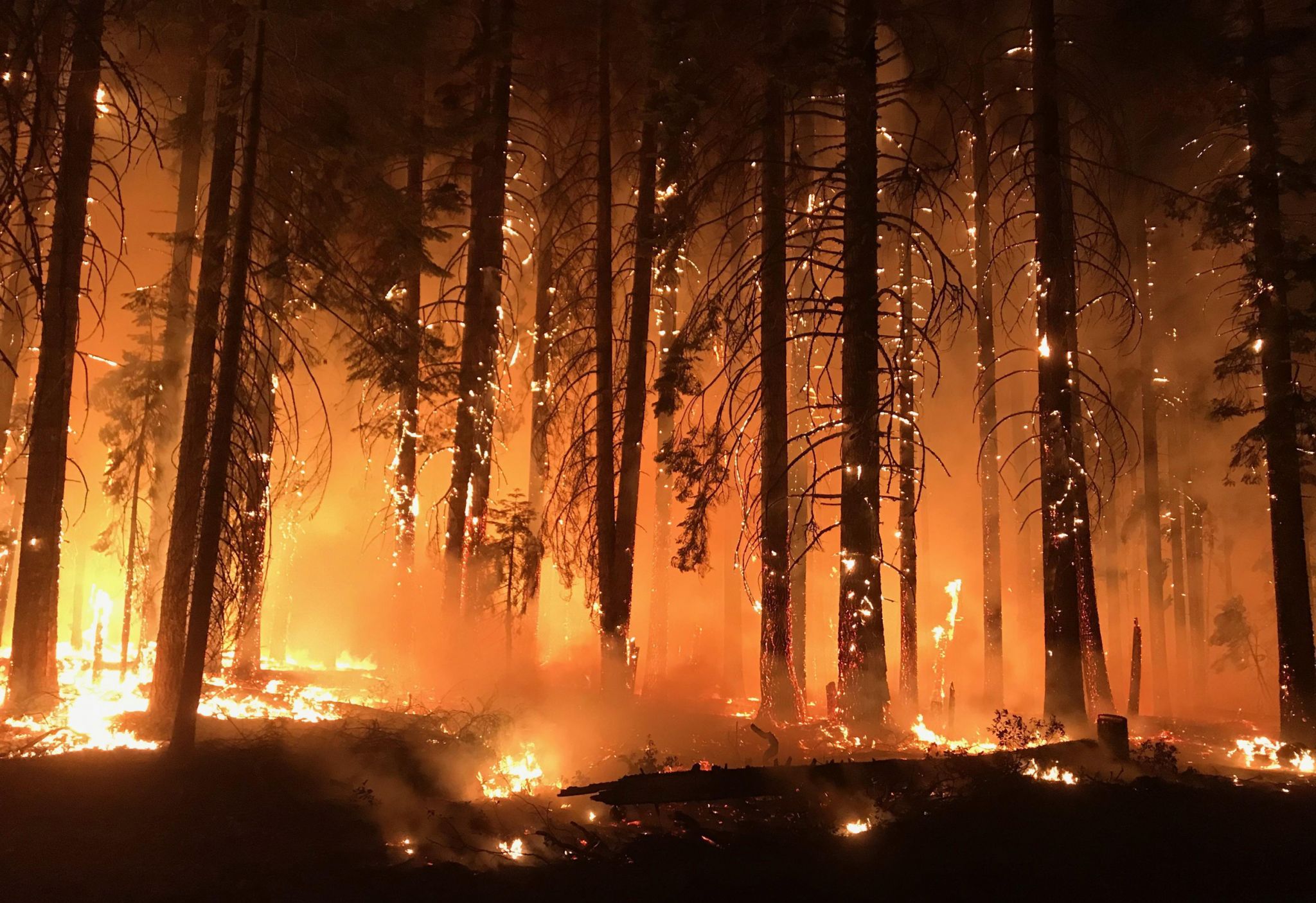Impacts, some locked in, will be extreme at 1.5°C and worse at 2°C
Narrow window to avoid catastrophic outcomes by reducing carbon emissions is open but closing rapidly
On August 9th, 2021, the Intergovernmental Panel on Climate Change released the Climate Change 2021: The Physical Science Basis report, which assesses the most recent research underpinning past, present, and future climate change, including greenhouse gas pollution in the atmosphere; air, land and ocean temperatures; extreme weather; drought and wildfire weather; and sea level rise.
The first of three Working Group reports in the IPCC’s Sixth Assessment Report (AR6) cycle, the report was approved Friday following two weeks of discussions in virtual plenary session, in which the scientists who authored the report and delegations from the IPCC’s 195 member nations arrived at a consensus on the report’s Summary for Policymakers.
The AR6 edition of the Physical Science report reflects major advancements in our understanding of the global climate system – and the human impact on it – since the AR5 Physical Science Basis report was released in 2013.
In a major update since the last Physical Science report, the IPCC now states with categorical certainty that human-caused greenhouse gas emissions are the primary cause of the warming responsible for changes in the global climate system and presents those changes as established fact. It also marks a significant uptick in the severity of current climate impacts, and warns of major escalation should we fail to rapidly reduce carbon pollution: Extreme impacts at 1.5°C above pre-Industrial temperatures will grow significantly more intense, frequent and damaging as we approach 2°C.
Here are some key takeaways:
- Human influence is warming the planet, causing widespread and severe impacts, including heatwaves, drought and extreme downpours in the United States.
- The impacts at 2°C will be dramatically more severe than the impacts at 1.5°C, which in turn will be significantly worse than current impacts.
- Weather “whiplash” will get worse with increased warming.
- Additional major impacts in the future are now locked in.
- Methane pollution has emerged as a major issue, and reducing methane pollution can significantly limit warming.
- There is a very narrow and rapidly-closing window to avoid catastrophic outcomes.
CLIMATE IMPACTS ARE SEVERE – AND WILL GET WORSE WITH MORE WARMING
Human influence is unequivocally warming the planet, causing widespread and severe impacts. Anthropogenic activity is responsible for more than 1°C increase in global surface temperature in the past decade, relative to pre-Industrial temperatures. As a result, climate change-driven extreme weather events are now widespread.
The impacts at 2°C will be dramatically more severe than the impacts at 1.5°C, which in turn will be significantly worse than impacts are now. Every fraction of a degree counts: Severe impacts at 1.5°C of warming will be significantly worse at 2°C. “Weather whiplash” – increasing variability of weather patterns – and compound events will become increasingly likely.
Additional major impacts in the future are now locked in. Warming to date has triggered ice sheet melting that will drive sea level rise for centuries, dramatically increasing coastal flooding in the decades ahead and reshaping the coastlines of every continent in the centuries ahead.
- Even if temperatures stabilize, the ice sheets will continue to melt until they adjust to the warming to date. Projections of multi-millennial sea level rise are consistent with reconstructed levels during past climate periods with temperatures similar to today: likely 5-10 meters.
- Extreme sea level events that occurred once per century in the recent past are projected to occur at least annually at more than half of all tide gauge locations by 2100.
- Sea level rise will continue beyond 2100, due to deep ocean warming and ice sheet melt, with sea levels remaining elevated for millenia, rising 2 to 6 meters if warming stays below 2°C and as much as 22 meters at 5°C.
Heat waves
Findings from the report:
- Globally, extreme heat waves now occur five times as often as before, and they will hit 14 times as often if warming reaches 2°C. Heatwaves in the Western United States are fueled by climate change.
- The frequency of heatwaves that are currently even more rare and extreme are increasing even faster. Even warming of just 1.5°C will deliver an increasing number of unprecedented extreme heat events.
Examples in the U.S: The West and Southwestern United States already are experiencing frequent heat waves, such as the heat dome in July that led to hundreds of deaths across Oregon and Washington. Attribution analysis determined climate change had increased the likelihood of that event by 150 times, finding the event would have been virtually impossible without global warming.
Drought
Findings from the report:
- Globally, droughts that used to occur once every 10 years now occur 70% more frequently. Drought in the Western United States is fueled by global warming.
- Such droughts will arrive between twice and three times as often if warming hits 2°C.
Examples in the U.S: The Western U.S. is currently experiencing megadrought conditions, forcing water cutoffs to farmers, threatening hydroelectric power generation, and resulting in massive die-offs of salmon populations. Several attribution studies have established the role of climate change in fueling this megadrought.
Fire
Findings from the report:
- The fire season is hotter, drier, and longer.
- Fire weather will increase as we warm to 1.5°C and grow even further at 2°C
Examples in the U.S: Recent fire seasons in the West and Mountain West of the U.S. have broken all-time records for fire devastation. Numerous attribution studies and the U.S. National Climate Assessment have established climate change is a major driver of wildfires in the Western U.S.
Tropical cyclones
Findings from the report:
- Warming makes tropical cyclones and extratropical storms stronger and loads them with more rainfall.
- Further warming will only supercharge these storms even more.
Examples in the U.S: Extreme rainfall and flooding during tropical cyclones such as Hurricane Harvey in 2017 is driving billions of dollars in damages. At least five attribution studies found global warming added to the deluge of rainfall dumped by Hurricane Harvey, and climate change was responsible for up to $67 billion of Harvey’s $90 billion price tag.
Sea level rise
Findings from the report:
- Globally, coastal flooding events that occurred once per century in the recent past will occur at least annually at more than half of locations globally by 2100.
Examples in the U.S.: Sea level rise to date drove storm surge further inland during superstorm Sandy, increasing Sandy’s surge losses by 30 percent in New York alone.
Extreme rainfall and flooding
Findings from the report:
- Heavy downpours that used to occur once every 10 years now occur 30% more frequently.
- Extreme precipitation events will arrive 70% more frequently if warming hits 2°C.
- Downpours that are more rare and extreme will increase in frequency even faster.
Examples in the U.S: Torrential downpours that devastated southern Louisiana in 2016, dropping 7 trillion gallons of water over the course of a week, caused $9 billion dollars in damages and killed 13 people. An attribution study by NOAA established climate change fueled that extreme rainfall.
Compound events
Findings from the report:
- At 2°C, compound events – such as concurrent heatwaves and droughts, or storm surge in combination with extreme rainfall – will occur more frequently.
Examples in the U.S: Heavy precipitation and strong storm surge during Hurricane Irma in 2017 was responsible for historic compound flooding in Jacksonville, Fla., and Savannah, Ga.
Weather “whiplash”
Findings from the report:
- Climate change is causing increased variability of the global water cycle, meaning regions will experience more severe swings between wet and dry events.
Examples in the U.S: This week, officials turned off the hydropower plant at Oroville Dam in California for the first time in its history due to extremely low water levels caused by severe drought. This is the same reservoir that was damaged and overtopped its emergency spillway in 2017 because of extreme flooding attributed to climate change, forcing the evacuation of 180,000 people.
GREENHOUSE GAS EMISSIONS ARE THE PRIMARY DRIVER OF WARMING
There is a direct, linear link between the amount of carbon dioxide (CO2) in the atmosphere and the rise in global temperatures. Global temperatures will continue to rise until carbon dioxide pollution ends completely – or any carbon pollution is captured – and deforestation ends.
- Carbon dioxide pollution is virtually permanent. To reverse warming driven by CO2 pollution would require removing carbon from the atmosphere, through natural means, such as reforestation, or technological means, such as direct air capture.
Methane (CH4) pollution has emerged as an issue. Reducing methane pollution can significantly limit warming. This report confirms carbon pollution in the form of methane emissions is skyrocketing. Methane has 80 times the warming power of carbon dioxide, but washes out of the atmosphere very quickly. Thus, reducing methane emissions results in lower methane concentrations in the atmosphere, with a cooling effect.
- Current atmospheric concentrations of methane are higher than at any time in at least the past 800,000 years.
- The pollution from natural gas operations and oil production is one of the significant contributors to the global surge in methane.
Cutting carbon pollution to zero is the only way to stabilize the global temperature.
- Strong, rapid and sustained reductions of carbon dioxide, methane, and other greenhouse gas emissions would have discernible impacts on slowing the rise in global temperature within only a few decades.
- If we fail to stop carbon pollution, further warming threatens to trigger abrupt tipping points with catastrophic outcomes on a global scale, such as rapid sea level rise due to ice sheet collapse and shut down of the Atlantic Meridional Overturning Current (often mislabeled as the Gulf Stream current).
PATHWAYS TO LIMITING WARMING
There is a very narrow and rapidly-closing window to avoid catastrophic outcomes. It is possible, but difficult, to stabilize temperatures below 1.5°C – and the challenge is political, not physical. More ambitious action than the five pathways outlined in this report could result in lower peak temperature.
- Currently we are on a path to exceed first 1.5°C, then 2°C of global warming by the end of this century unless we undertake steep reductions in carbon dioxide and other greenhouse gas emissions.
- From the carbon budget presented in this report, it is clear that there are no physical barriers to limiting warming to 1.5°C. There is no “warming in the pipeline.” We can hold warming to 1.5°C if we strictly limit our carbon pollution and eventually drive it down to zero.
- For the five emissions scenarios explored by this report, there is more than a 50% likelihood of reaching 1.5°C of warming in the 2030s. At the highest emissions scenario, that threshold would be reached even sooner.
- The most ambitious of the five pathways assessed by the report limits warming to 1.5° but does temporarily overshoot to 1.6°C and then brings the average global temperature down to 1.4°C.
- The report does not analyze the feasibility of these five scenarios, nor does it explore all possible pathways.



